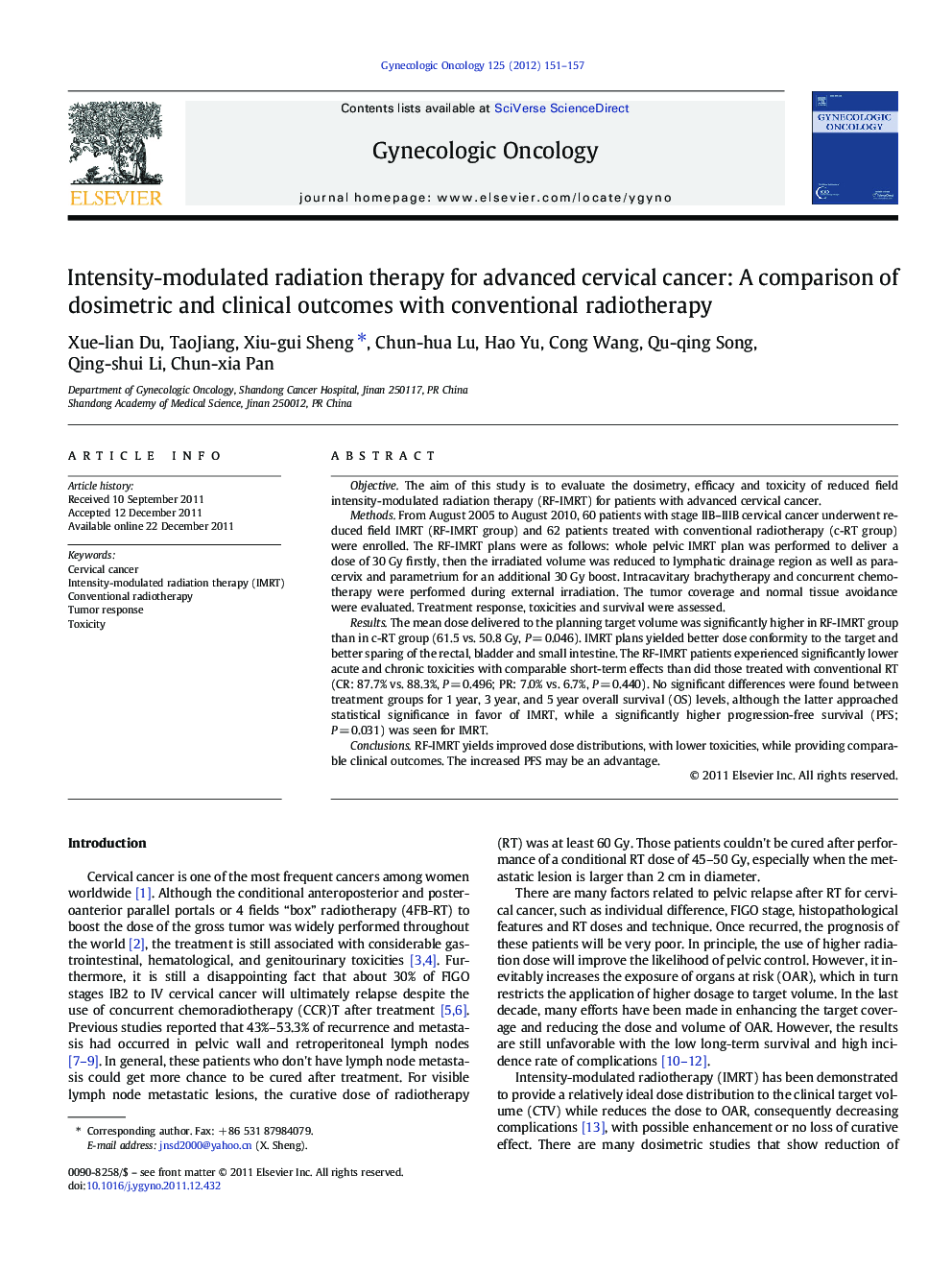| کد مقاله | کد نشریه | سال انتشار | مقاله انگلیسی | نسخه تمام متن |
|---|---|---|---|---|
| 3945262 | 1254256 | 2012 | 7 صفحه PDF | دانلود رایگان |

ObjectiveThe aim of this study is to evaluate the dosimetry, efficacy and toxicity of reduced field intensity-modulated radiation therapy (RF-IMRT) for patients with advanced cervical cancer.MethodsFrom August 2005 to August 2010, 60 patients with stage IIB–IIIB cervical cancer underwent reduced field IMRT (RF-IMRT group) and 62 patients treated with conventional radiotherapy (c-RT group) were enrolled. The RF-IMRT plans were as follows: whole pelvic IMRT plan was performed to deliver a dose of 30 Gy firstly, then the irradiated volume was reduced to lymphatic drainage region as well as paracervix and parametrium for an additional 30 Gy boost. Intracavitary brachytherapy and concurrent chemotherapy were performed during external irradiation. The tumor coverage and normal tissue avoidance were evaluated. Treatment response, toxicities and survival were assessed.ResultsThe mean dose delivered to the planning target volume was significantly higher in RF-IMRT group than in c-RT group (61.5 vs. 50.8 Gy, P = 0.046). IMRT plans yielded better dose conformity to the target and better sparing of the rectal, bladder and small intestine. The RF-IMRT patients experienced significantly lower acute and chronic toxicities with comparable short-term effects than did those treated with conventional RT (CR: 87.7% vs. 88.3%, P = 0.496; PR: 7.0% vs. 6.7%, P = 0.440). No significant differences were found between treatment groups for 1 year, 3 year, and 5 year overall survival (OS) levels, although the latter approached statistical significance in favor of IMRT, while a significantly higher progression-free survival (PFS; P = 0.031) was seen for IMRT.ConclusionsRF-IMRT yields improved dose distributions, with lower toxicities, while providing comparable clinical outcomes. The increased PFS may be an advantage.
► In this study we report clinical experience for treatment of patients with advanced cervical cancer using "reduced field" IMRT (RF-IMRT).
► This study focus on the correlation between dosimetry, clinical outcome and toxicities.
► We find that RF-IMRT makes excellent dose distribution, acceptable toxicities and encouraging preliminary clinical results.
Journal: Gynecologic Oncology - Volume 125, Issue 1, April 2012, Pages 151–157